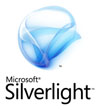My Blog

Url: http://www.techcrunch.com/2008/06/30/once-nearl...

I have been diving pretty deep into ADO.NET Data Services (see an upcoming article about ADO.NET Data Services and Silverlight 2 coming soon). I've been looking at the story around non-Entity Framework models through a Data Service and thought that NHibernate through a Data Service would be a great example.

Url: http://community.irritatedvowel.com/blogs/pete_...

Now that Silverlight 2 is getting closer to a reality (and a Go-Live license) the 3rd party controls are starting to sneak out. None of these are in 'release' quality but I thought it might help to get my opinion on the current state of these controls. Some of the vendors are releasing previews of their entire Silverlight 2 suites while others are releasing teaser controls (and some are even free!).

Url: http://silverlight.net/learn/learnvideo.aspx?vi...

The Entity Framework "No Confidence Vote" is a couple of days old now. I wanted to give the Internet a couple of days to chew it over and figure out where it really fit into the big picture. If you follow me on Twitter you may have seen some back and forth between Scott Belware and I recently. Most of this back and forth has been about his attacks of the Microsoft community (attacks of the technology or even the company are fair game as far as I am concerned). Getting personal by accusing me, the Microsoft community or even individual EF Team member's directly seems petty and unnecessary.

Url: https://www.livemeeting.com/cc/mseventsbmo/view...

I've been digging into some of the open source and 3rd party controls that are becoming available for Silverlight 2. While running into some odd issues with some of them it occurred to me that there are some design guidelines that haven't been well communicated. Back in the early days of WPF I learned (though exactly where is unclear) that every control should support an empty constructor and that all properties (e.g. XAML Attributes) should have a default value. I knew this to be true but I couldn't document where it came from.

When I teach Silverlight 2, I stress an important lesson that I thought that we (as developers) had learned the importance of linkability of the web. Early usage of Flash was the first time I noticed this. A number of those sites would create nested functionality that never changed the URL. If the URL doesn't change, i can't bookmark it. Most Flash guys learned their lessons pretty quick, but now I am inundated with AJAX driven sites that try hard to not to do post-backs. That's cool, but if the URL doesn't change I can't link to it.

Url: http://msevents.microsoft.com/CUI/EventDetail.a...

If you've used Silverlight 2 much, you probably have already run into the issue with URI's that can be specified in XAML (e.g. Image and MediaElement). When using relative URI's for these elements, Silverlight 2 uses a "Site of Origin" resolution symantic. Instead of resolving the relative URI's based on the website that the Silverlight 2 application is hosted on, it resolves it based on the site of the origin of the application (the .xap file). If the application is hosted on a site (i.e. http://mysite.com) and our .xap file is in a directory (i.e. http://mysite.com/ClientBin), then a relative URI will be resolved based on the locaiton of the .xap file. This means that a relative URI like "/foo.jpg" we resolve to "http://mysite.com/ClientBin/foo.jpg" *not* "http://mysite.com/foo.jpg" as you might expect. In fact, changing this to "../foo.jpg" doesn't change anything. It thinks that the directory of the .xap file is the root of the URI, no matter what you do. Lastly, this also means that if your .xap file is hosted on a site other than your website, these URI's are relatvie to that remote web server, not yours.

Url: http://geekdinners.com/dinnerinstance.aspx?id=10

Url: http://blogs.msdn.com/gduthie/archive/2008/06/1...

Url: http://silverlight.net/community/recognition

Url: http://silverlightrocks.com/cs/files/folders/sa...

In the documentation and change documents in Silverlight 2 Beta 2, they mention that the format of the Deep Zoom files have changed from a binary to an XML file. In fact, then mention that the file is called .DZI for a single image, and .DZC for an image collection.

I am headed to Europe this fall for two .NET conferences on the continent. I am excited to be speaking at these two great conferences:

Url: http://wildermuth.com/2008/06/06/Upgrading_your...

Url: http://www.sparklingclient.com/whats-new-in-sil...

Url: http://www.interact-sw.co.uk/iangblog/2008/06/1...